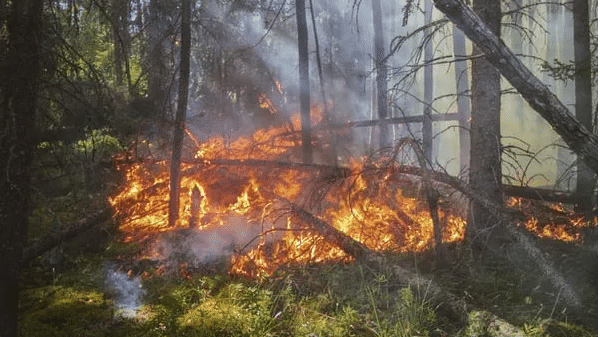Authorities continue to struggle in containing raging
wildfires and heat warnings are still in place on Monday as parts of the western United States and Canada suffer under scorching temperatures. Extreme
heat conditions have reached as far inland as the edge of the Rocky Mountains
in recent days, part of a dramatic heatwave that experts attribute directly to
climate change.
According to a warning issued by the US National Weather
Service (NWS), dangerous temperatures will continue in the region for the early
part of the week, with the agency forecasting highs of up to 116 degrees
Fahrenheit (47 Celsius) in southern California. A heat advisory was also issued
for communities outside Los Angeles until Monday evening.
Though the NWS said that temperatures were beginning to dip,
with breezes arriving in northern California and storms in Arizona and New
Mexico on Monday, it also warned of “another day of potentially
record-breaking heat” in parts of the western US.
“Excessive heat warnings remain in effect from
California to Utah since readings will still be well above normal for Monday
with particularly high overnight temperatures robbing many heat-struck regions
of much-needed respite,” AFP quoted an NWS statement as saying.
In the state of California, where more than twice as many
acres have burned this year compared to the same point in the record-breaking season of 2020, a large fire near Lake Tahoe expanded on Monday, spurred
by the heat, increased winds, low humidity, and dry vegetation.
A combination of two blazes sparked by lightning last week,
the Beckwourth Complex fire has rapidly grown to some 90,000 acres. Large areas
of forest have burned, with reports of homes destroyed in multiple towns, and
footage from the area showing burnt-out abandoned cars and buildings.
As the state enters what are traditionally its most
dangerous months for wildfires, evacuation orders were also issued for the
River Fire, which began Sunday just south of the Yosemite National Park.
In the neighboring state of Oregon, the even larger Bootleg
Fire more than tripled in size since Friday, reaching more than 150,000 acres
and threatening power supplies to California. Two firefighters were killed in
an aviation accident in Arizona.
And on the other side of the border in Canada, more than 50
new wildfires have erupted in the past two days.
Canadian meteorologists have predicted that highs
approaching 90 degrees Fahrenheit (32
Celsius) would continue in parts of western Canada on Monday.
The country’s transport minister Omar Alghabra on Sunday
announced new emergency measures aimed at preventing further wildfires in the tinder-dry region, including steps to slow or limit trains, which can spark
blazes. Several roads and highways in the area have been closed as the
government rated the wildfire risk in much of the province as “extreme”
and at least a dozen municipalities remained under evacuation orders.
The World Weather Attribution group said that global
warming, caused by greenhouse gas emissions, made the June heatwave at least
150 times more likely to happen.
Last month was the hottest June on record in North America,
according to data released by the European Union’s climate monitoring service..
The past six years, including 2020, have been the six
warmest on record.







